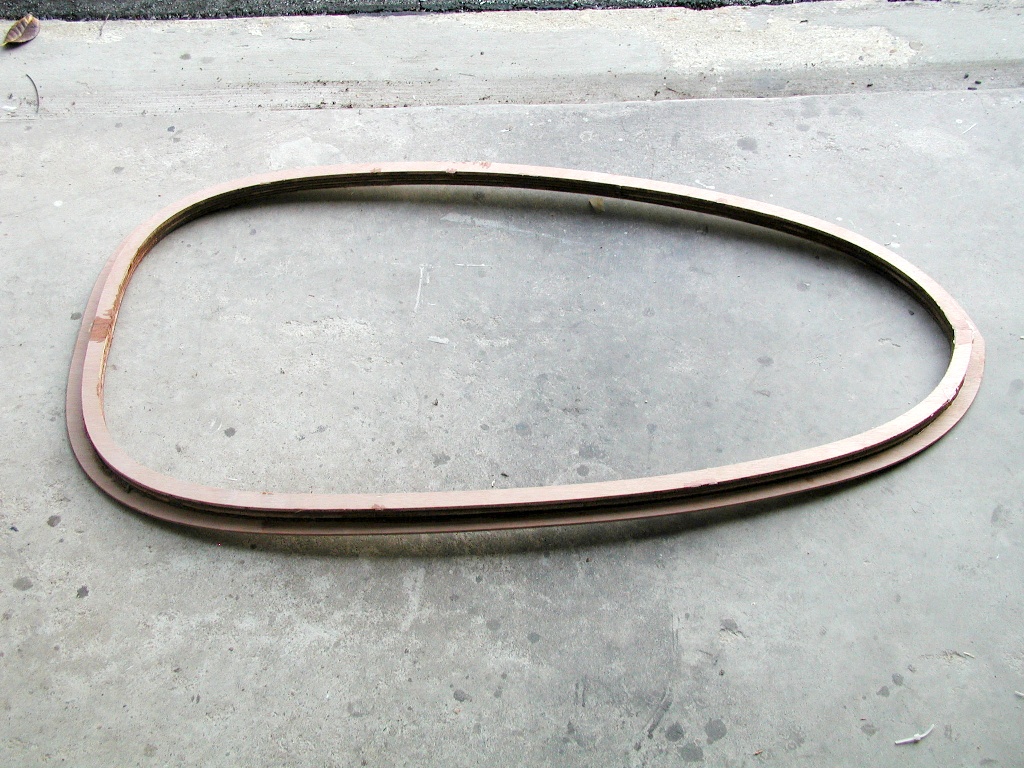Builders' Forum |
|
| ↓ Scroll to Last Comment ↓ | Forum Guidelines | Builders' Forum | |
I'm getting ready to fiberglass the deck on my WD12....The hull has one coat of fiberglass and expoxy so far, and I think I'm supposed to do the deck next and then reapply a second coat of expoxy to the hull and deck again for a second coat. Or should I do a second coat of epoxy on the hull before starting on the deck?
Another question. I stained the hatch cover a darker color than the hull and deck is going to be, for some contrast. I'd like to do the same with the cockpit cowling pieces so they stand out against a lighter hull and deck. Is it okay to stain the cowling pieces before I assemble the coaming spacers and the coaming ring itself, before I clamp and epoxy them to the finished deck surface?
Thx for any suggestions.
2 replies:
RE: WD12 Cockpit Cowling
Another thing to keep in mind is that the coaming lip is a high wear area. Hands, legs, feet, spray skirts, paddles, etc. will all be rubbing, bumping and banging it. If you don't want the thin stained layer of wood possibly worn away, you may want to cover it with a light layer of glass (4 oz or less) for abrasion protection.
If you are going to be doing all that staining, the sanding and epoxy and glass application will be finicky. I really recommend that you use that procedure where the coaming is built on a polyethylene layer on the deck so that it can be removed for sanding and further processing before being permanently glued on. It'll give you much better access, let you remove all the epoxy so that the stain will penetrate and keep you from marring your deck.


BTW, the link to the stains in the Shop Tip is dead. It points to the discontinued Behlen Solar Lux product and ends up on a blank page. The actual current Mohawk product is here.
Finally, remember if your staining experiment runs into some snags, you can always paint the coaming to be a contrasting color.
Laszlo













RE: WD12 Cockpit Cowling
» Submitted by Mark N - Fri, 6/4/21 » 7:17 AM
Generally speaking, you want to do the fill coats within a day of glassing so that you get good chemical bonding. If you wait longer, the epoxy is fully cured and you should sand the surface so the fill coats will have something to physically bond to.
I have used stain on a couple of kayaks but never on the coaming lip. If you have not already, read this tutorial by Nick Schade: https://www.clcboats.com/shoptips/finishing-tips/staining-your-kayak.html
The biggest deal is that epoxy will block stain from penetrating into the wood, so any staining must be done prior to gluing things together Staining the coaming spacers will be a waste because except for the edges, they will be completly covered by the lip. Any stain on the edges will likely be removed when you sand the spacer assembly smooth. You may be able to stain the lip after assembly if you make sure there is no epoxy on top.